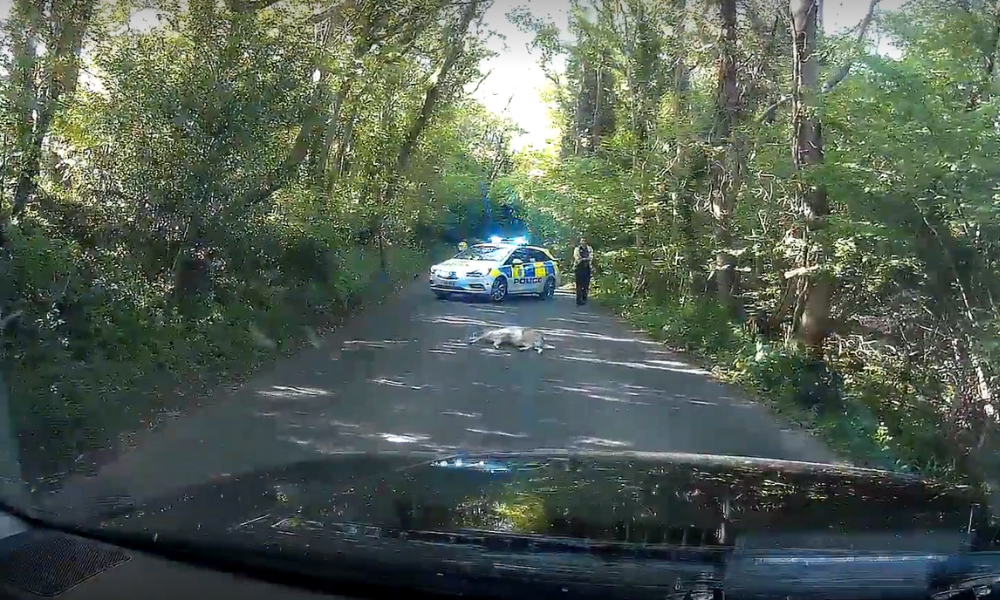Dedicated HAD Volunteers There for Deer in Dire Need
Share article:
Article by:
Andrea Barden, Marketing & Fundraising Executive, British Deer Society
Dedicated HAD Volunteers There for Deer in Dire Need
Up to 70,000 deer collide with a vehicle on the UK’s roads each year. Many that are hit die almost instantly, but between 12,500 and 22,200 will be left barely alive and suffering at the roadside, fatally injured, incapacitated, and highly stressed.
It’s an awful situation to witness – not just for the driver and passengers involved, but also for passers-by and the traffic police attending the scene. No one likes to see an animal suffering in such a way.
Who can help a deer suffering in such a situation?
In all situations involving a deer alive and injured at the side of the road, the local police should be informed. Although it may be tempting to get involved, an injured deer can still be capable of causing injuries to an inexperienced rescuer so dealing with the situation is always best left to a suitably trained operative.
Wild deer are highly stressed by the immediate proximity of human beings, and this is increased by unnecessary handling. Furthermore, collisions with motor vehicles can cause extensive internal injuries that are not immediately apparent. As a result, deer can be extremely difficult to rehabilitate successfully and, even where it is possible, an animal may never recover sufficiently to be released into the wild again. In a great many cases euthanasia is the only practical and humane option.
See: What to do if you hit a deer on the road / see an injured deer on the road.
If the police force receiving the report has suitably equipped officers available, they may request them to attend the scene to humanely euthanize the deer. Whilst grateful for the police taking on this responsibility, many would argue that this may not be the best use of their time and resources. There’s also always the concern that an armed officer called to the scene becomes unavailable to attend other urgent incidents elsewhere.
A veterinary professional is an alternative option for the police to call upon if one is available, but this can still involve substantial risk because even a severely incapacitated deer might still react and injure the person who is attempting to restrain and euthanize it using veterinary drugs. The necessary restraint involved can also cause heightened levels of unnecessary stress to the deer.
Are there any alternative solutions?
Yes: several police forces across the UK can call upon the help of a network of experienced and trained operatives known as Humane Animal Dispatch (HAD) volunteers.

What is a HAD VOLUNTEER?
A HAD volunteer is a dedicated, private individual who is prepared to go out of their way, very much at any time of the day or night, to attend to a deer, or to any other animal in dire need, at the roadside or elsewhere.
They work in close liaison with their local police force and are required to complete special training to do their work.
See: Humane Animal Dispatch Training
On top of this training, HAD volunteers needs to possess an ‘OPEN’ Firearms Certificate and have appropriate firearms, ammunition, transport and fuel – all of which they usually pay for themselves. Some forces allow volunteers to claim mileage expenses if they are registered as an official volunteer under their scheme.

HAD volunteers also need additional safety equipment including high-visibility clothing and warning lamps. Additional kit, such as dispatch screens and blankets may also be necessary to prevent public distress.
Choosing to be an HAD volunteer is therefore not a decision that anyone takes lightly. Those who do so are obviously passionate about deer welfare and believe that no deer should be left to suffer unnecessarily.
On top of that, some HAD volunteers, such as Chris who is part of the Hampshire and Isle of Wight Constabulary HAD Scheme, also give their time to help us and the police raise awareness about driving deer aware and the vital importance of HAD volunteer schemes.

A NATIONWIDE HAD SCHEME
The BDS is working closely with Hampshire Police and other parties to attempt the implementation of a more nationwide HAD scheme. We hope this work will see increased numbers of HAD volunteers available to attend deer in dire need across the country alongside a reduced burden on key police resources.
If you would love to support this vital work and help properly equip more HAD volunteers, you can by supporting our appeal, Change The Story, today!
The rutting season is fast approaching (September-October). This inevitably causes increased deer movement and an increased risk of deer/vehicle collisions across the country. Please help us equip more HAD volunteers in time.
Would you like to become a HAD volunteer?
You can also find out more about the training requirements here.
Do you live in the Hampshire area and are keen to get involved in their HAD Scheme?
If you would like more information about the scheme in Hampshire or would like to be put on the waiting list then please email your full name, address, email address and mobile number to humaneanimaldispatch@hampshire.police.uk.











